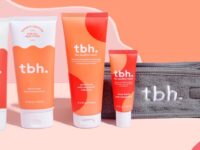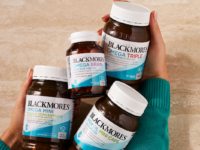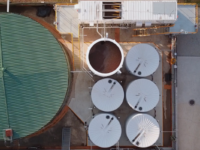 Of all the key trends in the experience-first economy, marketing co-created with the shopper is the stand-out fundamental and most revolutionary change.
Of all the key trends in the experience-first economy, marketing co-created with the shopper is the stand-out fundamental and most revolutionary change.
We could not be further away from the Mad Men one-way advertising of the mid-20th century.
Big brands are showing how it works
McDonald’s “Create your taste”, Nestle’s Purina dog selfies, Bite’s “Lip Lab” with “Customise your own Bite lipstick” and Intel’s “What lives inside”.
Intel’s social film campaign really hit the mark. The company received 5500 fantastical creature submissions in response to its call for people to create characters for a social film series, directed by Academy Award-winning visual-effects director Robert Stromberg (Maleficent).
Australian household brands are following suit, creating opportunities for shoppers themselves to drive campaign content.
Sweet success
Nestle caused a frenzy with its Kit Kat Studio, a concept store giving shoppers the chance to create their own custom-made Kit Kat chocolate bar from a range of ingredients, complete with bespoke packaging and custom message options.
As the concept moved from Sydney to Melbourne over Christmas, Nestle Confectionery head of marketing Chris O’Donnell said the Sydney studio had been an incredible success with more than 25,000 Kit Kats sold.
This Australian initiative has been so successful that the concept is about to be launched in international markets.
Telstra’s “Summer of Wi-Fi” campaign promoted thousands of new free Telstra Air Wi-Fi hotspots around Australia. To bring the campaign to life, agency TRO created interactive installations where shoppers could place themselves in a beach scene showing how easy it is to connect – and share their image on social media.
In another interactive campaign aimed at creating excitement before the Telstra Discovery Store launch in November, TRO developed a window experience where passers-by could create an animated GIF of themselves with a graffiti border.
Taking the selfie in a humorous new direction, the campaign was a hit, with 19,881 photos taken and 5375 shared.
Community spirit
With violence against women increasingly in the news last year, Myer developed a community-minded campaign to raise awareness. “One Million Stars to End Violence” called on customers to make their own individual stars to contribute to a Myer window, unveiled on International Women’s Day. Community support for the initiative was unprecedented, and the campaign recently took out the global POPAI shopper marketing award for Active Display Group.
Another Myer shopper experience was an augmented reality installation of dinosaurs, promoting the Dinosaurs and Jurassic World 3D book and augmented reality app, available from the store. In collaboration with Active Display Group, TRO created an immersive audiovisual experience in which customers could see real-time footage of themselves on a video wall being surrounded by life-like dinosaurs. The experience captured the imagination of children and adults alike, with 120,000 interactions during the campaign.
In response to the global trend toward co-created content, creatives working agency-side, brand-side and retailer-side have all needed to adapt to a new universe.
Now the best ideas are those that shoppers want to co-create with stores and brands. It is simply a matter of adding their input and sharing it – all to sell for you.
In the 20th century, big creatives reaped all the glory for great campaigns. Now, a reinvented “selfie world” puts your shoppers in the limelight.
Lee McClymont is GM for POPAI Australia & New Zealand. Visit popai.com.au
This article was first published in the April edition of Inside FMCG magazine. Click here to subscribe.















